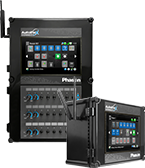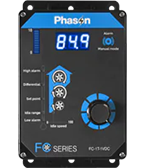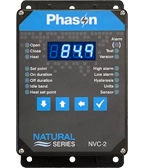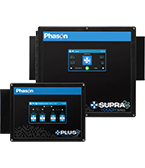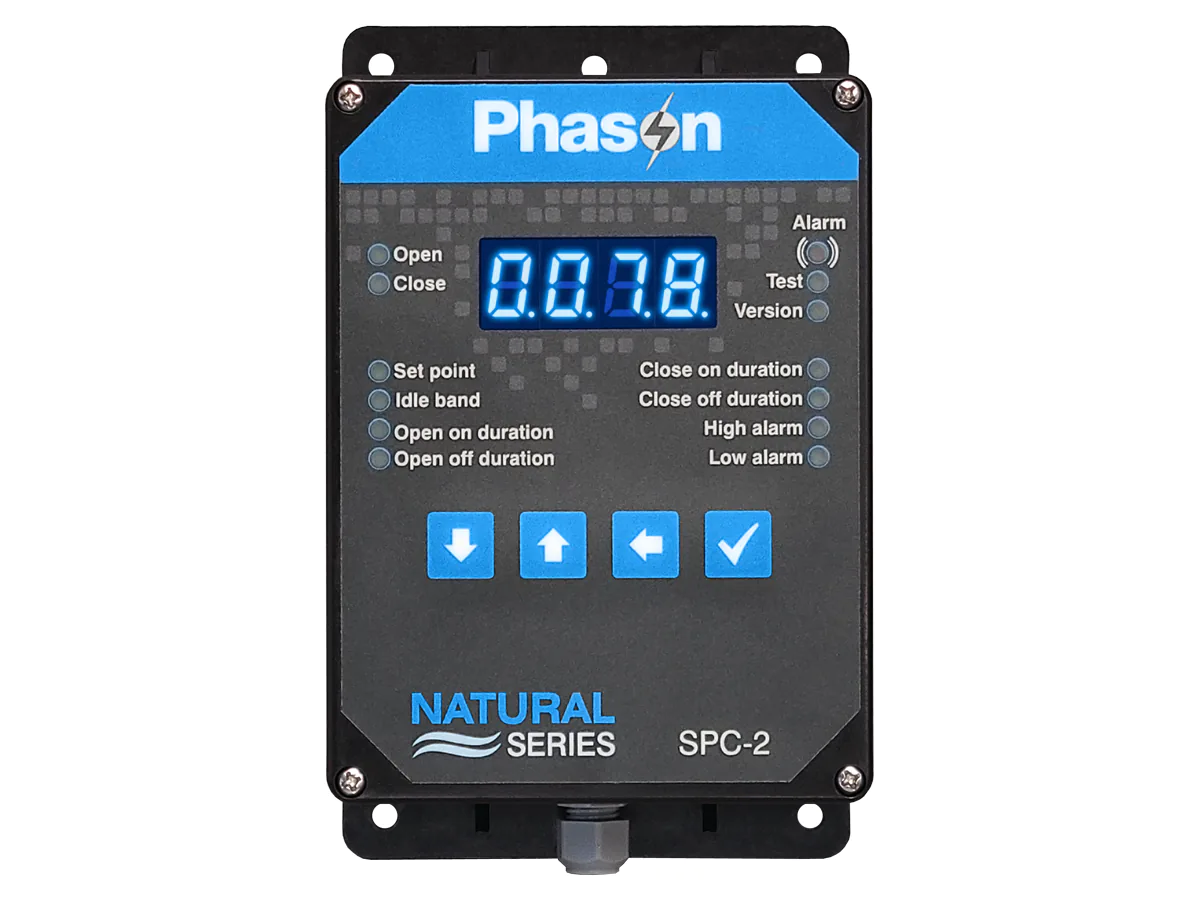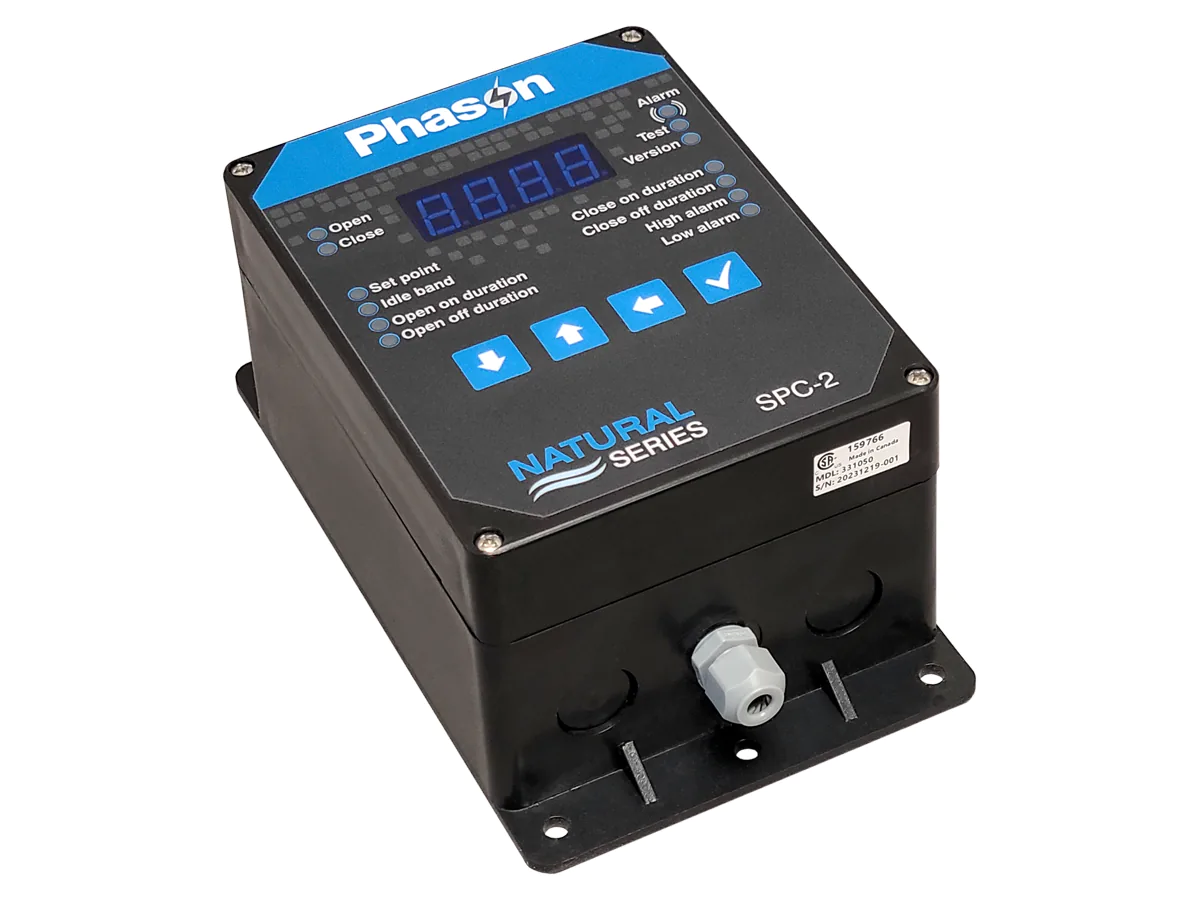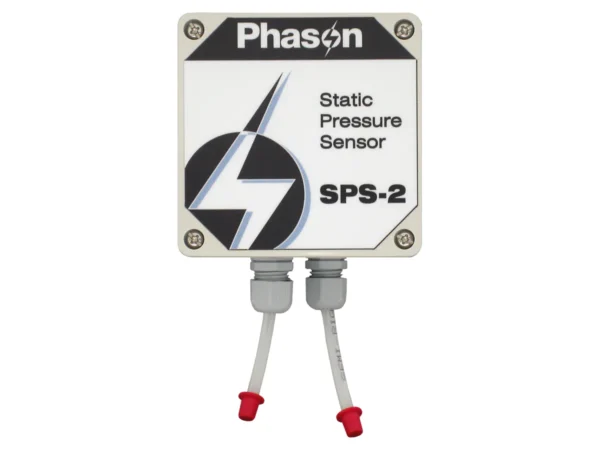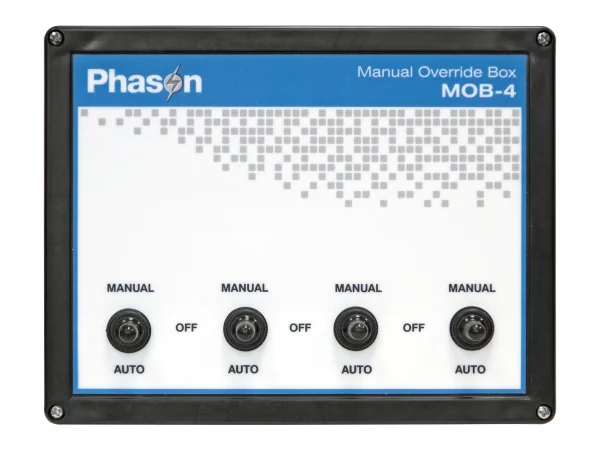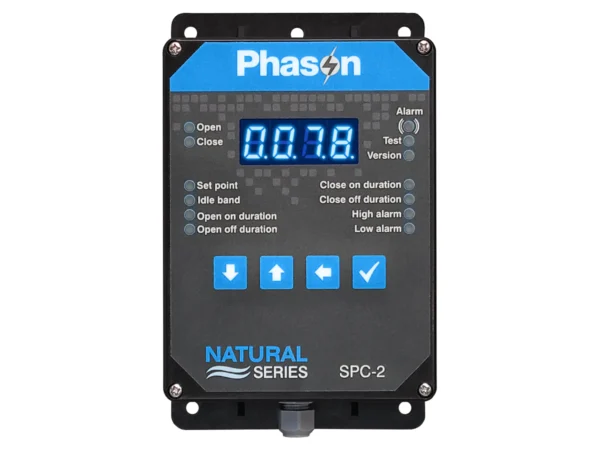- Automatic pressure-based control
- Programmable On and Off durations for the open and close relays
1 to 900 seconds (up to 15 minutes) - Programmable Set point and Idle band
0.010 to 0.250 inWC - Programmable high and low pressure alarms
- Two curtain relays (one open, one close)
- Differential pressure sensor
- Alarm relay (for external alarm system)
- Four-button keypad
- Four-digit LED display
- Programming and status LEDs
- Manual override and test modes
- Power-failure settings protection
- NEMA 4X enclosures (Corrosion-resistant, water-resistant, and fire-retardant)
- cCSAus approval
- Limited warranty
Static Pressure Control
Model: SPC-2
Static Pressure Control
Model: SPC-2
Simple and effective pressure control
The Static Pressure Control is a fully programmable controller that provides extensive flexibility for your curtain or awning control needs. The SPC-2 automatically controls the pressure in a room by operating a curtain machine according to your programmed settings.
How it works
- When the pressure is within the idle band, the SPC-2 maintains the curtain position.
- When the pressure rises above the idle band, the SPC-2 opens the curtain for the open on duration and then pauses for the open off duration.
- After each off duration, the SPC-2 checks the pressure and then either opens or closes the curtain, depending on the pressure.
The Static Pressure Control is ideal for any building where static pressure is important.

Manual Override Box
The Manual Override Box increases the load handling capability of your control's relays and provides an external disconnect.
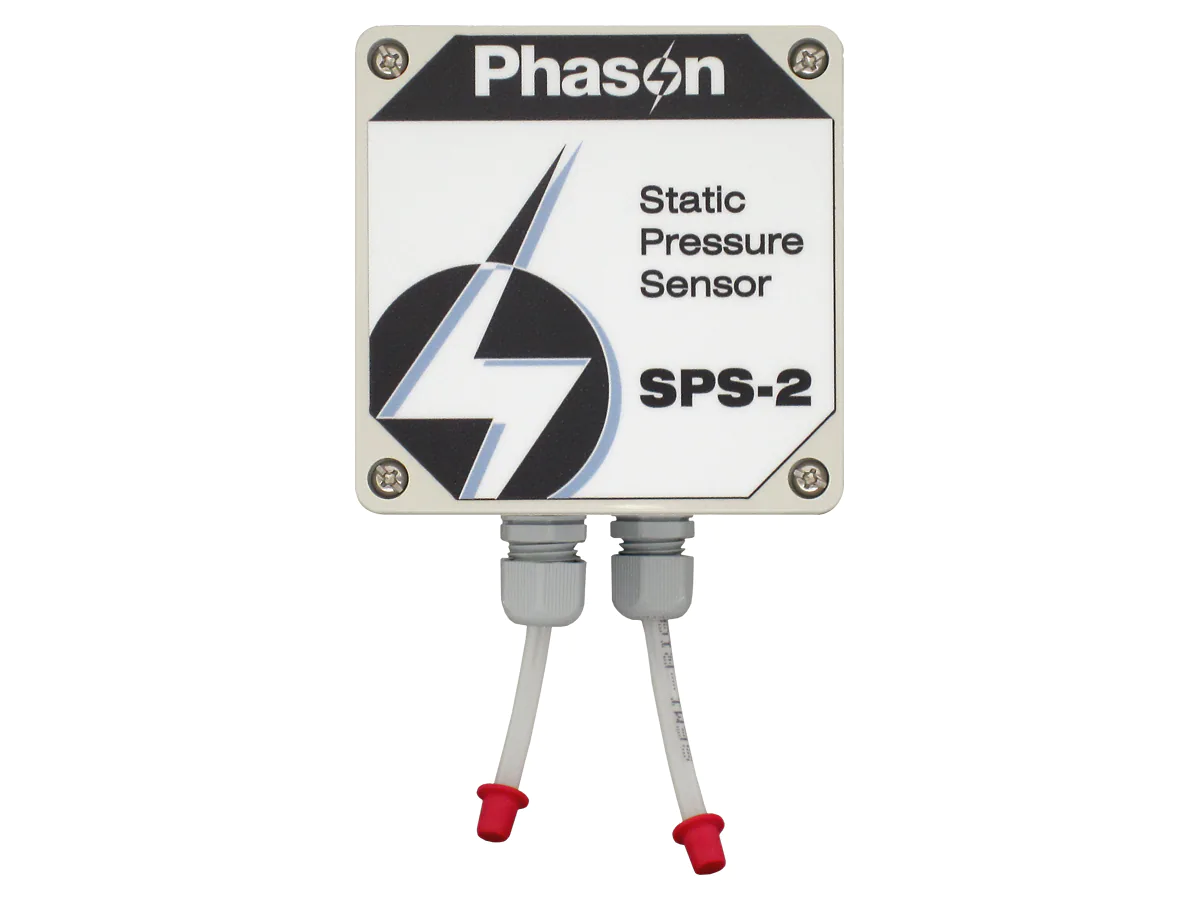
Static Pressure Sensor
The Static Pressure Sensor is a differential pressure sensor designed to monitor the difference in pressure between the inside and outside of a building.
General
How big is the control?
The control enclosure is 4.75 x 7.80 x 3.75 in. (12 x 15.6 x 9.5 cm). The sensor enclosure is 3.5 x 3.5 x 2.38 in. (8.9 x 8.9 x 6 cm).
Can I manually override the curtains?
Yes. There is a software manual override that can be accessed through the SPC-2 menu. See Using manual override mode in the user manual for more information. If you require a hardware override, check of the MOB-4.
Can this control more than one curtain?
Yes. If you want more than one set of curtains controlled exactly the same, and the combined motors are within the relay ratings, or you are using contactors, then you may control multiple curtains off one SPC-2.
Can I customize how quickly the curtains react to a change in pressure?
Yes. You can program the open on and off durations, and the close on and off durations. This allows you to adjust the curtains to react as quickly and aggressively as you want.
Does the sensor need to be mounted by the control?
The sensor can be mounted up to 300 feet away from the control.
Installation
Why is there a delay when I switch from manually overridden Open to Close?
There is a three-second delay when switching between Open and Close. This is to allow the motor time to stop before switching directions.
Troubleshooting
Why are my curtains constantly adjusting?
There are two things that affect how often the curtains will adjust themselves. The first is the idle band. The larger the idle band, the larger a change in pressure needed for the curtains to adjust. The second is the open and close on/off durations. The shorter those durations are programmed for, the more frequently the control will look at the temperature and decide if it needs to adjust its position.

